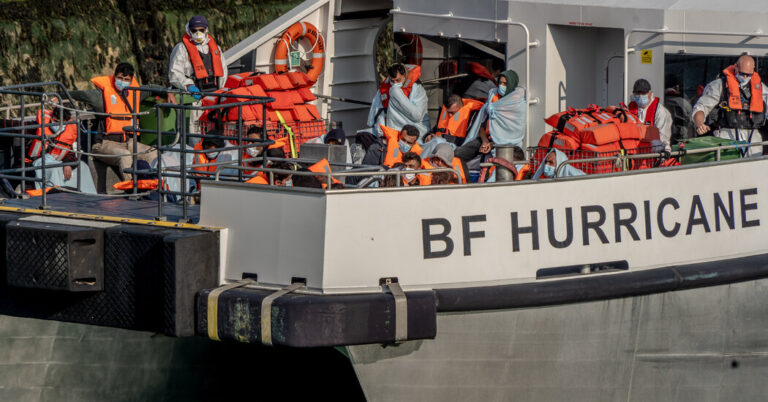How Biden’s Asylum Order Works
President Biden announced an executive order on Tuesday to essentially block asylum at the southern border, a major shift in how the United States has historically handled claims for protection.
The move, a suspension of longtime guarantees that give anyone who steps onto U.S. soil the right to seek a safe haven, is intended to deter illegal border crossings, an issue that has weighed on Mr. Biden’s political fortunes as he heads into the November presidential election.
Here is how it will work.
What does the order say?
The order suspends entry of migrants who cross the southern border illegally and was set to take effect at 12:01 a.m. Wednesday, barring legal challenges.
The order will be lifted if the government certifies that fewer than 1,500 people a day on average crossed the border in the span of a week. It can kick back in if the numbers go above 2,500 a day, on average, in a given week.
On Monday, around 3,500 people crossed without authorization, in line with the trends of recent weeks, according to a person with knowledge of the data, so the numbers would have to fall substantially for the suspension to end.
Mr. Biden said in the order that despite a recent decline in crossings from historic highs, the numbers at the border continued to exceed the government’s “capacity.” The order also called on Congress to update immigration laws.
“The current situation is also the direct result of the Congress’s failure to update an immigration and asylum system that is simply broken — and not equipped to meet current needs,” the proclamation said.
What happens if a migrant crosses the border anyway and asks for asylum?
Until now, when migrants have been detained crossing the border, agents have generally asked them if they intended to claim asylum. Many say they do, and after passing an initial screening they are often allowed to remain in the country while they wait, sometimes years, for a hearing on their claim.
But now, many migrants could be turned back more readily.
Migrants who say they are fearful of returning can still ask for protection in the United States — but they will have to volunteer such claims without being asked, a practice known as the “shout test.” They will also have to use programs other than asylum that have a much higher bar and that most people will not qualify for.
Immigration advocates have said the changes, taken together, amount to a virtual suspension of the asylum system for people crossing the border.
The Biden administration “is eliminating key protections to prevent refugees from being returned to harm through imposition of this ‘shout test,’” said Robyn Barnard, a lawyer at Human Rights First. “It will be a recipe for disaster and certainly result in refugees being sent to danger or worse death.”
The United States will rely on Mexico to immediately take back its nationals. Some migrants from other countries may be detained briefly while transportation is arranged. It will continue to be challenging for the government to deport people to certain countries, like China.
To the extent possible, the Department of Homeland Security will keep those requesting protection in detention rather than release them into the country. But the government’s resources will be tested by the detentions and the need for asylum officers to process the migrants, so some migrants may be able to enter the country when crossings surge.
Could courts block Biden’s order?
Yes. The American Civil Liberties Union has said it will sue to stop the measure, and it is unclear how the suit would play out.
But a federal court in San Francisco stopped the Trump administration from enacting limits on asylum in late 2018. An appeals court and the Supreme Court allowed the judge’s order to remain in place.
The same judge who blocked the Trump measure, Jon S. Tigar, has also halted other Biden asylum restrictions issued early last year. The U.S. Court of Appeals for the Ninth Circuit allowed that measure, which restricted asylum for those who crossed through a third country on the way to the southern border, to remain in place during the legal challenge.
Are there any exceptions to the order?
Yes. The asylum restrictions do not apply to unaccompanied immigrant children, victims of human trafficking, people who have visas, or those facing serious medical emergencies or threats to their lives, according to the Department of Homeland Security.
Check out our Latest News and Follow us at Facebook
Original Source







